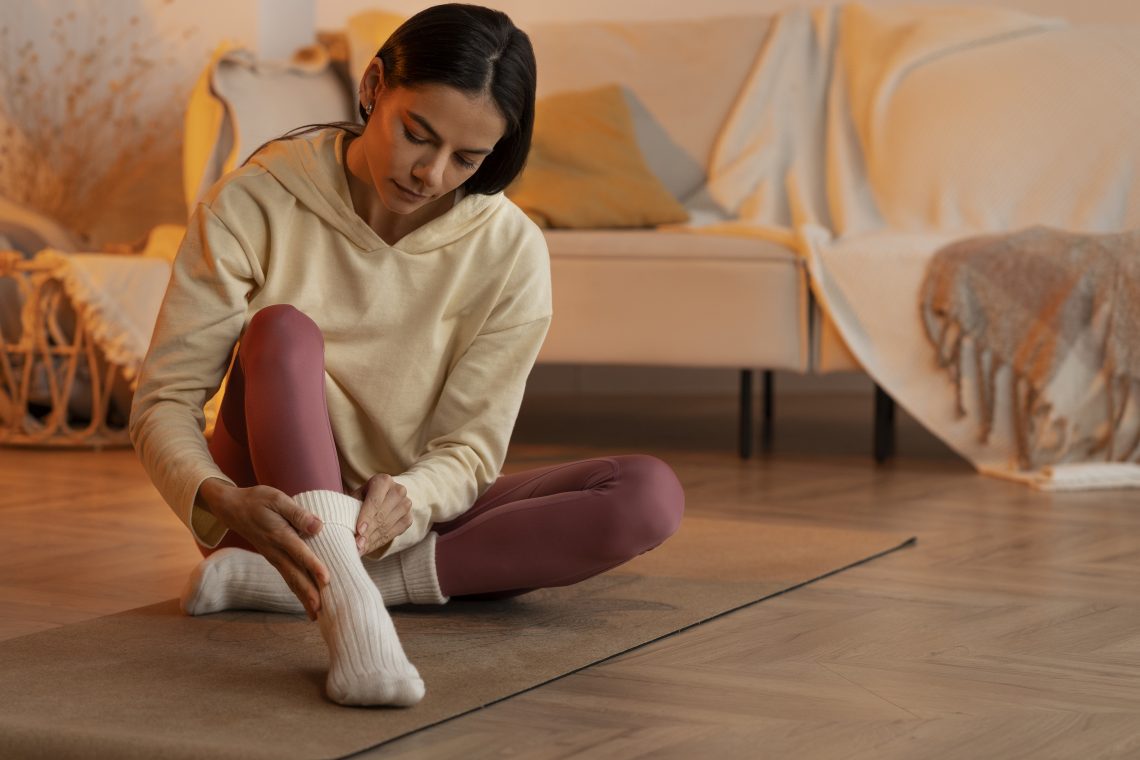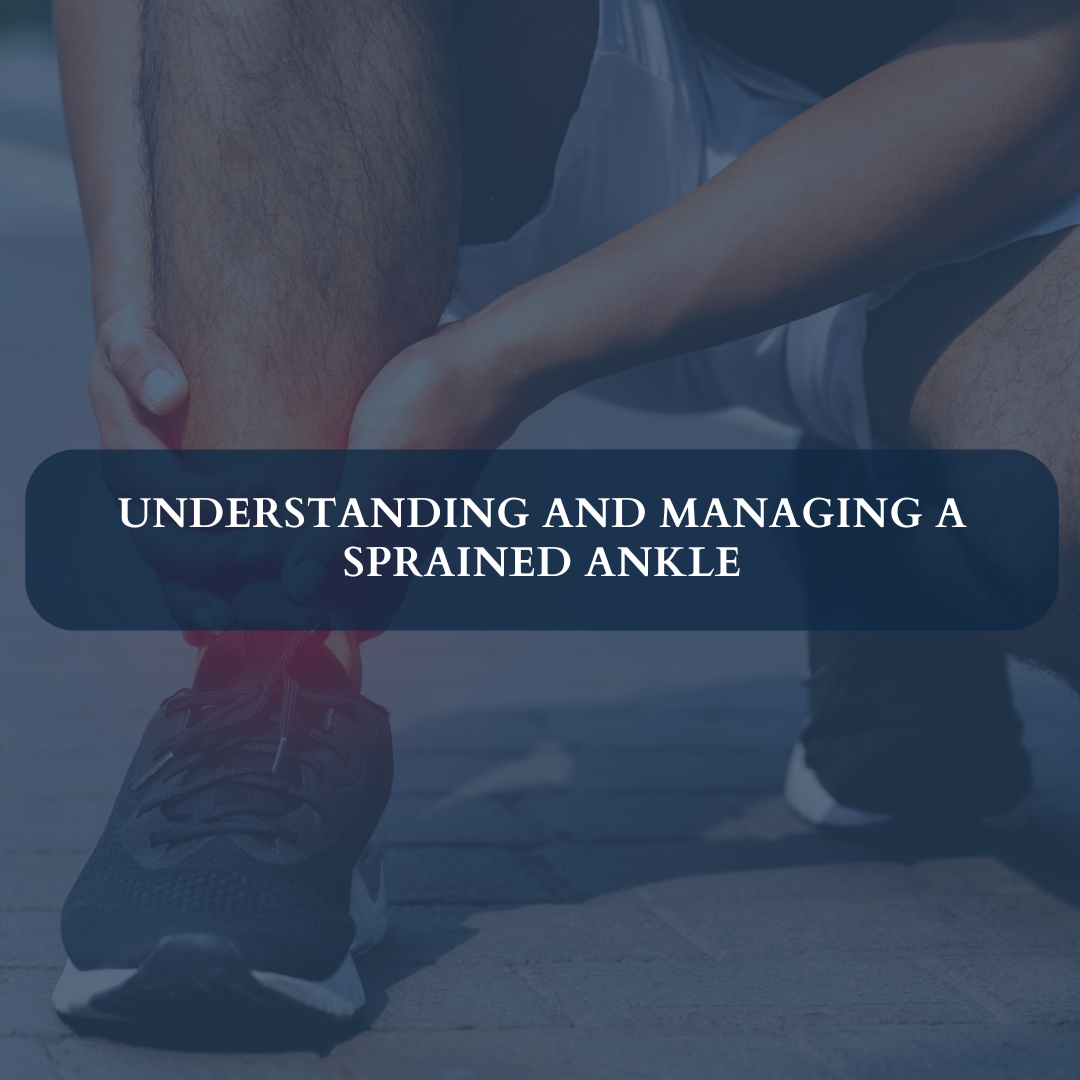A sprained ankle is one of the most common injuries that can happen to anyone whether you’re an athlete, a fitness enthusiast, or just walking on uneven ground. It occurs when the ligaments that support your ankle are stretched or torn due to sudden twisting or rolling of the joint. The pain, swelling, and bruising that follow can make walking difficult. While complete healing usually takes a few days to weeks, certain quick remedies can help reduce pain and inflammation overnight and speed up recovery.
In this article, we’ll explore effective ways to heal a sprained ankle overnight naturally, and when to seek medical help for faster and safer recovery.
1. Follow the R.I.C.E. Method Immediately
The first and most crucial step after a sprain is the R.I.C.E. protocol — Rest, Ice, Compression, and Elevation. This simple yet effective treatment helps minimize swelling and pain in the first 24 hours.
- Rest: Avoid putting weight on your injured ankle. Walking or running can worsen the injury and delay healing.
- Ice: Apply an ice pack or wrap ice cubes in a towel and place it on the ankle for 15–20 minutes every two hours. Ice helps reduce inflammation and numbs the area, providing instant pain relief.
- Compression: Use an elastic bandage or ankle brace to compress the area. This helps control swelling and gives your ankle stability.
- Elevation: Keep your ankle elevated on a pillow or cushion, ideally above the level of your heart, to improve blood circulation and reduce swelling overnight.
Related post: If your pain extends beyond the ankle, you may find our guide on how to reduce ankle pain helpful for long-term recovery tips.
2. Use Epsom Salt for a Warm Soak
After the initial 24 hours, a warm Epsom salt soak can be beneficial. Epsom salt is rich in magnesium, which helps relax muscles, reduce swelling, and improve circulation. Add half a cup of Epsom salt to a bucket of warm water and soak your foot for 15–20 minutes before bedtime.
This method helps relieve stiffness and promotes relaxation, allowing you to sleep better and wake up with reduced pain.
3. Try Gentle Massage with Essential Oils
A gentle ankle massage can promote blood flow and reduce muscle tightness. Use natural anti-inflammatory oils such as peppermint, lavender, or eucalyptus oil. Massage gently in circular motions around the affected area avoid pressing too hard on the swollen joint.
You can also try trigger point release techniques that help relax the surrounding muscles. Check out our article on how to release trigger points in muscles to learn safe and effective methods.
4. Apply a Cold and Warm Compress Alternately
Once the swelling begins to subside, alternating between cold and warm compresses can enhance healing. The cold compress reduces inflammation, while the warm compress encourages blood flow and muscle relaxation.
To do this:
- Apply a cold compress for 10 minutes, followed by a warm compress for 10 minutes.
- Repeat this cycle two to three times before sleeping.
This therapy reduces stiffness and improves flexibility, helping your ankle heal more quickly.
5. Use Supportive Wrapping or a Brace
Keeping your ankle supported overnight is essential to avoid further strain. Wrap the ankle with a soft elastic bandage or wear a compression brace. This prevents unnecessary movement while sleeping, helping the ligaments heal in a stable position.
Avoid wrapping too tightly, as it can restrict blood flow and cause discomfort. You should be able to slide a finger between your skin and the bandage comfortably.
6. Try Natural Anti-Inflammatory Remedies
Nature offers some powerful anti-inflammatory agents that can aid recovery. Some effective options include:
- Turmeric paste: Mix turmeric with coconut oil to create a soothing anti-inflammatory ointment. Apply it gently to the sprained area.
- Ginger tea: Drinking ginger tea helps improve circulation and reduce swelling.
- Aloe vera gel: Known for its cooling properties, aloe vera can reduce inflammation and promote healing.
You can learn more about natural remedies for joint and muscle conditions in our article on how to treat arthritis pain naturally.
7. Elevate and Rest Overnight
While it might sound simple, proper rest is the most important part of overnight healing. Lie down and keep your injured ankle elevated on a pillow to reduce fluid accumulation and swelling. Avoid sleeping in positions that put pressure on the injured leg.
Good quality sleep supports your body’s natural healing process by releasing growth hormones and repairing damaged tissues.
8. Perform Gentle Mobility Exercises (Next Morning)
After a night of rest, your ankle may feel slightly stiff. Before putting full weight on it, try gentle ankle rotations and toe flexing exercises to restore mobility. Avoid pain-inducing movements your goal is to regain flexibility, not force recovery.
If your ankle remains swollen or painful for more than 48 hours, consult a physiotherapist for a personalized rehabilitation plan. You can also explore our detailed guide on how to recover from sports injury for expert recovery tips.
9. When to See a Doctor
While most mild sprains improve within a few days, you should seek medical attention if:
- You experience severe pain or cannot walk at all.
- There’s visible deformity or bruising that worsens.
- Swelling and pain persist beyond 48–72 hours.
- You hear a popping sound at the time of injury (possible ligament tear).
A physiotherapist or orthopedic specialist may recommend an X-ray or MRI to rule out fractures or severe ligament damage.
10. Preventing Future Ankle Sprains
To avoid recurring ankle injuries:
- Warm up properly before exercise or sports.
- Wear supportive footwear that fits well.
- Strengthen your ankle muscles with balance exercises.
- Avoid uneven surfaces when possible.
- Listen to your body rest when you feel discomfort.
Conclusion
While you may not be able to completely heal a sprained ankle overnight, following these steps can significantly reduce pain, swelling, and stiffness within hours. The key is early care, rest, and consistent natural remedies that support healing. Combine the R.I.C.E. method with gentle massage, elevation, and anti-inflammatory treatments to wake up feeling much better.
And remember the best way to heal is to prevent future sprains through strengthening, stretching, and wearing proper footwear.




